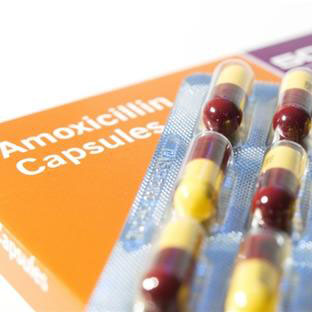Exclusive NICE’s claim that the NHS could cut total antibiotic prescribing by almost a quarter if its guidance was followed was not based on published data and ‘should not be taken as NICE’s assumption of what will happen’, Pulse has learnt.
The institute has admitted that its figure of 10 million avoidable antibiotic prescriptions a year was based on ‘the far end of plausability’ of an estimate made by a single expert adviser.
The claim was made at the release of new guidance on antimicrobial stewardship, and was highlighted by the national media to show that GPs were applying a ‘soft touch’ when it came to the prescribing of antibiotics.
At the launch, the institute announced that GPs will be regularly audited on whether their prescribing lines up with existing guidelines, with a suggestion that persistent offenders could be referred to the GMC.
In support of the new guidance, NICE’s director for the Centre for Clinical Practice, Professor Mark Baker, stated that NICE’s 2008 guidance on prescribing for upper respiratory tract infections (URTI) had not been implemented in full and could have cut antibiotic prescribing by 22%.
He added that NICE’s new guidance could cut total prescriptions by the same percentage, which – when applied to the 41.6 million annual antibiotic prescriptions – would equate to 10 million.
However, after being asked about the evidence behind the figures by Pulse, NICE confirmed the 10m figure was just an estimate by an expert advisor that was ‘at the far-end of plausibility’, and was used to illustrate the scale of NHS prescribing, not to highlight GPs as inappropriate prescribers.
A NICE spokesperson said: ‘The 10 million statistic was an estimate based on expert opinion from advisors to the Department of Health.’
NICE plays the tough guy on antibiotics
Related stories
NICE plays the tough guy on antibiotics
GPs shouldn’t face sanctions for trying to do the right thing
GPs should be referred to GMC for persistently over-prescribing antibiotics, says NICE
Chief executive Sir Andrew Dillon added: ‘The guideline sets an ambition for the NHS, working with patients, to make better use of antibiotics than we do now. Substantial reductions in prescribing are desirable and possible.
‘The figure of a reduction of 10 million prescriptions is at the far end of a plausible estimate of what could, in theory be achieved. It was used in the news story for illustrative purposes, in part to indicate the volume of prescriptions being issued by the NHS. It was not intended as a target and should not be taken as NICE’s assumption of what will happen.’
This is a departure from NICE’s line at the launch last week.
Answering a question from Pulse last week, Professor Baker said: ‘[URTI prescribing] is one of the main areas. If that guideline had been fully implemented as written, we would have expected total antibiotic prescribing to have dropped by 22%. What actually happened was it rose by 3%.’
The GPC has already sought urgent clarification from NICE after Professor Baker told journalists that GPs who flout prescribing guidance could be referred to the GMC.
NICE has since explained they were seeking to ‘support GPs not admonish them’.
A Public Health England report last year made clear that GPs are far from the worst offenders, despite making up 79% of total NHS antibiotic prescribing in 2013, compared to 15% in hospitals and 6.2% from ‘other community prescribers’ – mainly dentists and walk-in centres.
GP prescribing actually fell by 3.5% in 2012-13, and only increased by 4.1% from 2010 to 2013 compared with a 12% increase in hospital prescribing, and a 32% increase by other community prescribers.
Pulse October survey
Take our July 2025 survey to potentially win £1.000 worth of tokens













